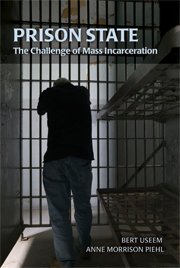Book contents
- Frontmatter
- Contents
- Acknowledgments
- 1 The Buildup to Mass Incarceration
- 2 Causes of the Prison Buildup
- 3 More Prison, Less Crime?
- 4 Prison Buildup and Disorder
- 5 The Buildup and Inmate Release
- 6 Impact of the Buildup on the Labor Market
- 7 Conclusion: Right-Sizing Prison
- Notes
- Index
- CAMBRIDGE STUDIES IN CRIMINOLOGY
2 - Causes of the Prison Buildup
Published online by Cambridge University Press: 31 January 2011
- Frontmatter
- Contents
- Acknowledgments
- 1 The Buildup to Mass Incarceration
- 2 Causes of the Prison Buildup
- 3 More Prison, Less Crime?
- 4 Prison Buildup and Disorder
- 5 The Buildup and Inmate Release
- 6 Impact of the Buildup on the Labor Market
- 7 Conclusion: Right-Sizing Prison
- Notes
- Index
- CAMBRIDGE STUDIES IN CRIMINOLOGY
Summary
Few people in the mid-1970s could have predicted the massive growth in prison and jail populations that was about to occur.
However one calculates the numbers, the late twentieth century saw a massive increase in the extent of incarceration in the United States. From 1973 to 2005, the number incarcerated per 100,000 U.S. residents increased five-fold, from 96 to 491. To understand the buildup in its various aspects, we address the social forces that summoned it forth, the impact of the buildup on order behind bars, and the impact of the buildup on the broader society, including the crime rate and the labor market. That is, we should consider the cause of the buildup, its course, and its consequences. This chapter investigates the first of these issues – what brought about the buildup – leaving the other two for subsequent chapters. We begin by examining the scholarly work on this issue. Much of this literature relates the prison buildup to the large-scale social changes that occurred over the past several decades, even, in some formulations, to grand historical themes.
The literature can be divided into two blocks. In the first block, researchers agree that a broad-based social movement supported the buildup, but then disagree over whether the movement is best characterized as the by-product of social discontents associated with rapid social change or as an instance of purposeful people seeking solutions to a problem.
- Type
- Chapter
- Information
- Prison StateThe Challenge of Mass Incarceration, pp. 14 - 50Publisher: Cambridge University PressPrint publication year: 2008

